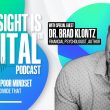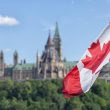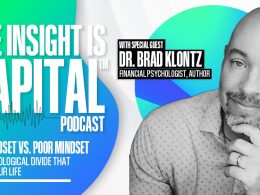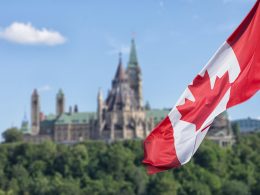by Olga Bezrokov, Russell Investments
Executive summary:
- The Bank of Japan delivered its first rate increase in 17 years and ended yield-curve control
- At its March meeting, the Bank of England held rates steady but hinted at cuts later this year
- A majority of U.S. Federal Reserve officials still expect three rate cuts in 2024
On the latest edition of Market Week in Review, Senior Portfolio Manager Olga Bezrokov and ESG and Active Ownership Analyst Zoe Warganz discussed the latest headlines from major central banks around the globe.
Bank of Japan hikes rates into positive territory
Bezrokov and Warganz started by unpacking the Bank of Japan’s (BoJ) March 19 interest-rate increase, which Bezrokov noted was the central bank’s first rate hike in 17 years. The decision, which was widely expected with inflation edging closer to the BoJ's 2% target, brought interest rates out of negative territory for the time since 2016, she observed. In addition, the BoJ abandoned its yield-curve control program, which had allowed the bank to purchase longer-dated bonds to ensure that the yield on the 10-year government bond didn’t exceed 1%, Bezrokov explained.
She noted that despite the rate hike, the Bank of Japan still has the lowest policy rate in the world, with short-term interest rates now in a range from 0% to 0.1%. “Expectations are that this rate increase will not be the start of a new hiking cycle—rather, it’s more likely to be a one-and-done hike from the BoJ, at least for now,” Bezrokov said. As evidence, she pointed to BoJ Governor Kazuo Ueda’s comments that an accommodative monetary policy is likely to remain in place for some time, given Japan’s economic outlook.
Bank of England signals rate cuts amid drop in inflation
Switching to Europe, Bezrokov said the Bank of England (BoE) left interest rates unchanged at its March 21 meeting but signaled that rate cuts are likely at some point this year. The BoE’s benchmark rate currently sits at 5.25%—its highest level in 16 years, she noted.
“Importantly, for the first time since September 2021, no members of the bank’s rate-setting committee voted to increase rates. This marks a shift in the perspective of the committee,” Bezrokov stated, adding that the bank did note that monetary policy could remain restrictive for some time, even with rate cuts in place. While BoE Governor Andrew Bailey said that central-bank officials aren’t ready to cut rates quite yet, Bezrokov said he did express optimism over the recent decline in inflation. On a year-over-year” basis, headline inflation in the UK eased to 3.4% in February, she explained.
“This drop in inflation, combined with Bailey’s comments, has led investors to increase their bets that the BoE might start cutting rates sooner than envisioned. However, with inflation still above the BoE’s target of 2%, the timing of the first rate cut still looks uncertain,” Bezrokov stated.
She finished the segment on European central banks by unpacking the Swiss National Bank’s (SNB) recent announcement of a 25-basis-point rate cut. Bezrokov said that in lowering its benchmark rate to 1.5%, the SNB became the first among the world’s 10 most-traded currencies to cut rates since the global rate-tightening cycle began roughly two years ago. “Ultimately, the SNB had the room to deliver a rate cut because Swiss inflation has been running significantly weaker than expected over the past few months,” she explained, noting that SNB officials anticipate price increases remaining below the bank’s 2% target for the next few years.
Fed holds rates steady but projects three cuts this year
Bezrokov and Warganz closed with a look at the headlines from the U.S. Federal Reserve’s (Fed) March 19-20 policy meeting. Bezrokov said that as expected, the Fed held interest rates steady between 5.25%-5.5%, but still penciled in three rate cuts for 2024.
“Heading into the meeting, market participants were very focused on whether or not the recent uptick in inflation would alter the number of rate cuts Fed officials anticipate this year,” she remarked, noting that investors were particularly interested in the central bank’s dot-plot projections. The dot plot is the chart that plots each member of the Federal Open Market Committee’s (FOMC) forecast for short-term interest rates, and is updated every three months, Bezrokov explained.
Markets had been pricing in three rate cuts this year, with a likely start in June, and the Fed meeting largely affirmed this, she said. “Even with the slight rise in inflation, the dot-plot showed that a majority of Fed officials still expect three rate cuts in 2024—although nearly half anticipate two or fewer cuts this year,” Bezrokov stated. She added that the central bank also modestly raised its growth and inflation forecasts for the year and lowered its unemployment projections, reflecting the continued strength of the U.S. economy.
In the press conference following the meeting, Chair Jerome Powell stressed that the Fed will remain data-dependent, but didn’t seem overly concerned with the recent uptick in inflation, Bezrokov said. “Powell stated that he thinks the Fed will soon achieve confidence that inflation is moving down to its 2% target, and that rate cuts are likely later this year,” she noted.
Bezrokov added that markets reacted favorably to Powell’s remarks, with the S&P 500® Index notching another record close on March 21, while bond prices also rallied. She finished by encouraging viewers to check out Russell Investments’ upcoming Global Market Outlook, which publishes March 26, for in-depth insights on the second-quarter outlook for global markets and economies.
Copyright © Russell Investments
















